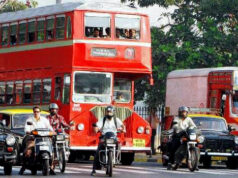Author: Beena Aiyar
One of the most evocative moments of our independence struggle is Mahatma Gandhi’s Salt Satyagraha of 1930. Whether in Dandi, Dharasana or Vedaranyam—the simple act of walking to the shore and breaking British Salt laws shook up the Empire. Gandhiji’s powerful speech the night before his 250 km march to the shores of Dandi urged satyagrahis specifically protest the salt act by “carrying away the natural salt deposits on the seashore”. Yet, 67 years after Independence (and 84 years after the Mahatma’s urging) today carrying away salt from the shore is only permitted upon payment of a cess.
While salt duty was abolished with effect from 1 April 1947, we persisted in the taxing of salt. As the Salt Commissioner’s Office notes in the proud telling of its history: “After abolition of duty on salt, a question arose how to meet expenses for maintaining salt department. To meet these expenses, Government of India imposed a cess on salt in the nature of excise duty with effect from 1.4.1947.” The Salt Cess Act of 1953 was passed a few years later, levied for the development of the salt industry and labour welfare schemes. A salt development fund was established in 1958, under the Act, to be operated by the Central Salt Board. In 1996 the government began de-licencing the salt industry.
Indian Salt Management Machinery
The Salt Cess Act, 1953: “An Act to provide for the levy and collection of a cess on salt for the purpose of raising funds to meet the expenses incurred on the salt organisation maintained by Government and on measures in connection with the manufacture, supply and distribution of salt. “
The cess is meant to meet the expenditure incurred by the Central Government relating to the regulation and control of manufacture, supply and distribution of salt, establishment and maintenance of research stations and model salt farms, establishment, maintenance and expansion of salt factories; fixing the grades of salt, promoting and encouraging co-operative effort among manufacturers of salt; and promoting the welfare of labour employed in the salt industry. Section 4 of the Act provides for utilising it (after meeting administrative expenses for the department) for development of salt industry and Labour Welfare Works.
Since liberalisation, the role of the government in manufacturing and controlling goods has reduced quite significantly. 92% of the salt is produced by the private sector. What remains now is its role in leasing of vast tracts of government land, carrying out meagre development and labour welfare schemes, quality control, and facilitating salt related nutrition programmes.
The Salt Commissioner’s Organisation, attached to the Ministry of Commerce & Industry, is responsible for controlling all aspects of the Salt Industry. The Salt Commissioner who heads the department is based in Jaipur HQ. Under him, there are five Regional Offices headed by Deputy and Assistant Salt Commissioners. The SCO is staffed through the Indian Salt Service, one of the smallest central services under government of India with a mere 11 sanctioned posts. Ironically enough, the same servicemen were designated as Salt Controllers under British Rule (and until 1952). At last count this entire machinery had about 800 officers in various roles (while the Plan sanction is for 50 odd posts)
What happens to the Cess?
For 2013-14, total cess collected was Rs. 3.3 crores, the cost of collecting which came to 1.5 crores, nearly 50% (this is the average pattern for 2010-2014). Total expenses for the year incurred by the SCO amounted to Rs. 27 crores, of which roughly Rs. 24 crores goes into paying for the salaries of 800 officers who work in various capacities for the salt department. Demand for Grants for the DIPP in 2011-12 (since then the demands seem to have become less detailed, and granular) for the salt commissioner’s office was a mere Rs 30 crores.[1] The budget for the department provides for establishment charges of the organisation and for development/ welfare works.
In addition to running 32 mobile and stationary laboratories that monitor the quality of salt and leading the iodisation campaign of government of India, the SCO in 2013-14:
- carried out a study on retention of iodine in poly packed iodised salt with passage of time
- successfully organized meetings with stakeholders in procurement and distribution of adequate iodised salt in different states
- made some concerted efforts to popularize consumption of iodised salt
- organized Salt India Conclave 2014
- conducted 27 eye care camps and organized 9 sports meet for the benefit of the Salt workers, gave out 3,500 scholarships to meritorious children, and conducted 1 training programme in Vedaranyam. (Vedaranyam incidentally is the site from where Gandhiji’s southern commander, C Rajagopalachari undertook the Salt Satyagraha.)
Even though the cess is earmarked, the amounts in play are so insignificant that it would be smarter and more efficient to do away with the cess, and bear the expenses of the salt administration through general revenues. Should the cess be done away with, the cost of running the department will come down even further.
When your cost of collection is 50% of your total cess, it points to an inefficient and ineffective system. The largest portion of the collections under the salt commissioner’s office is from rents on leased land, not even the cess. The combination of these provides a sixth of the annual running costs of the department.
Salt Cess, like other cesses, must go
Many experts have reiterated time and again that cesses are bad public finance. The recent Economic Survey has argued that “taxes clarified as ‘bad’ in public finance theory like cesses, surcharges, transaction taxes, and taxes imposed for ease of collection such as the dividend distribution tax, need to eventually go. Reducing tax related distortions can increase efficiency and fuel GDP growth”.
The High Level Committee on Salt in 1978 recommended that the cess be abolished on account of the flimsy collections and high costs—back then the Committee observed the “total annual collection is so small, the cost of administration so heavy, and the controversies in this so many that the committee considers the quantum of cess collected is not commensurate with the costs and total effort in its collection and therefore recommends that it should be removed altogether”. Advocates of smaller government like NK Singh and Arun Shourie have argued for the abolition of cesses such as the salt cess for a long time.
The 13th Finance Commission’s report identifies challenges in implementing GST.: Among these is collapsing all existing indirect taxes, surcharges and cesses to ensure a national common market and a unified streamlined tax code that have a ‘common conceptual core’.
Besides the question of how inconsequential the cess amounts are, there are several other issues around the salt machinery that need a serious hard look:
- 62,000 acres are under the control of the salt commissioner, and are leased to private players and cooperatives for the production of salt. The SCO’s key role in recent years is the management of the leasing and rent renewals for these lands. This places an awful lot of discretionary powers at the hands of the machinery, which does not even have a vigilance officer attached to it.
- GoI already has a Food Safety and Standards Act, 2006. While quality control labs are great service, shouldn’t we have an integrated approach for all food items together?
- The health and nutrition programmes such as reducing iodine deficiency could easily be part of a public health department.
- The imposition of cess requires that private manufacturers in addition to all the rules and regulations, maintain another 3 forms (F, G and H under the Act). Is the burden of compliance worth the amounts collected?
- While the intent may have subsequently become the welfare of marginalised salt workers (known as Agariyas in Gujarat), at the time of founding, it was simply to keep the organisation going. Keeping in mind that groups such as Agariyas are severely deprived, how should the government ensure their development and welfare? Why can’t large centrally sponsored schemes such as MGNREGS, RSBY, and the other host of social security schemes be used instead to support the salt workers? Proceeds from the salt cess have been used to provide drinking water facilities, basic health care and recreation to salt workers—aren’t the former two the most basic of local government responsibilities? After all, salt is only produced in 52 districts in the country—reaching this group shouldn’t require yet another layer of bureaucracy.
[1] Budget 2011-12, http://indiabudget.nic.in/ub2011-12/eb/sbe12.pdf
Post Disclaimer
The opinions expressed in this essay are those of the authors. They do not purport to reflect the opinions or views of CCS.





